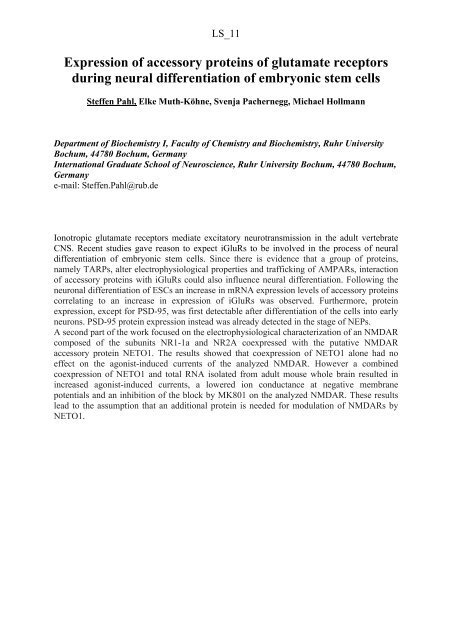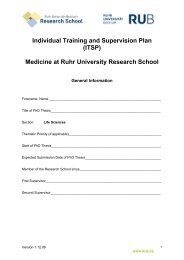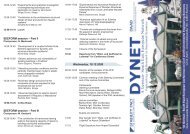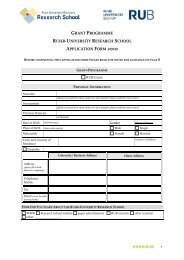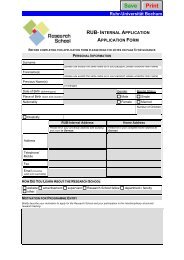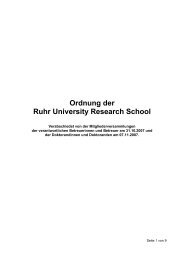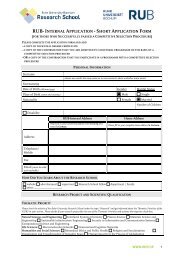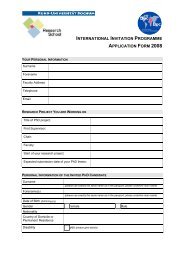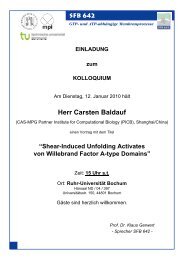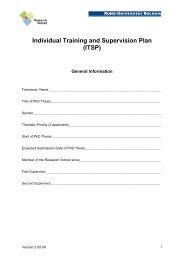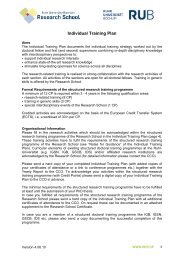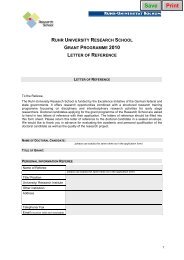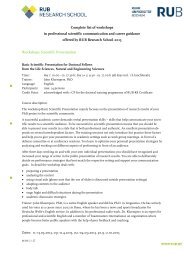Section Days abstract book 2010.indd - RUB Research School ...
Section Days abstract book 2010.indd - RUB Research School ...
Section Days abstract book 2010.indd - RUB Research School ...
Create successful ePaper yourself
Turn your PDF publications into a flip-book with our unique Google optimized e-Paper software.
LS_11<br />
Expression of accessory proteins of glutamate receptors<br />
during neural differentiation of embryonic stem cells<br />
Steffen Pahl, Elke Muth-Köhne, Svenja Pachernegg, Michael Hollmann<br />
Department of Biochemistry I, Faculty of Chemistry and Biochemistry, Ruhr University<br />
Bochum, 44780 Bochum, Germany<br />
International Graduate <strong>School</strong> of Neuroscience, Ruhr University Bochum, 44780 Bochum,<br />
Germany<br />
e-mail: Steffen.Pahl@rub.de<br />
Ionotropic glutamate receptors mediate excitatory neurotransmission in the adult vertebrate<br />
CNS. Recent studies gave reason to expect iGluRs to be involved in the process of neural<br />
differentiation of embryonic stem cells. Since there is evidence that a group of proteins,<br />
namely TARPs, alter electrophysiological properties and trafficking of AMPARs, interaction<br />
of accessory proteins with iGluRs could also influence neural differentiation. Following the<br />
neuronal differentiation of ESCs an increase in mRNA expression levels of accessory proteins<br />
correlating to an increase in expression of iGluRs was observed. Furthermore, protein<br />
expression, except for PSD-95, was first detectable after differentiation of the cells into early<br />
neurons. PSD-95 protein expression instead was already detected in the stage of NEPs.<br />
A second part of the work focused on the electrophysiological characterization of an NMDAR<br />
composed of the subunits NR1-1a and NR2A coexpressed with the putative NMDAR<br />
accessory protein NETO1. The results showed that coexpression of NETO1 alone had no<br />
effect on the agonist-induced currents of the analyzed NMDAR. However a combined<br />
coexpression of NETO1 and total RNA isolated from adult mouse whole brain resulted in<br />
increased agonist-induced currents, a lowered ion conductance at negative membrane<br />
potentials and an inhibition of the block by MK801 on the analyzed NMDAR. These results<br />
lead to the assumption that an additional protein is needed for modulation of NMDARs by<br />
NETO1.


